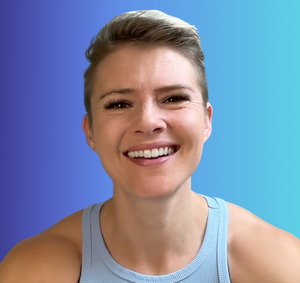Execution, visualisation and meditation serve different purposes. They are complimentary to each other.
Execution helps you make things happen
When you start taking action, you start learning. Research and speculation took you so far, but execution sees you through. Thinking less and doing more means putting yourself out there, testing what works, making changes and going again. Steps in one direction bring new answers and ideas and opportunities to explore. The default is that you do. Overthinking has no place in execution.
Visualisation helps you attract the known
In visualising a future that you want to make happen, you align yourself to receive it. You start to become the version of you that’s required, and your mind conditions your body to show up as you need to. Visualising the future scenarios that you want to see happen means that when they happen, you recognise them. You know when you have arrived. You realise that you once hoped for what you now have, which brings a huge sense of gratitude.
Meditation allows for the unknown to arrive
By meditating, you prepare for magic to happen. The practice helps you realise you can’t and don’t control everything. As the subconscious mind works away in the background, you can surrender the final outcomes to a power bigger than you. You cannot possibly visualise every detail of your future, and nor would you want to. The things that lie ahead are bigger and better than your current self knows of, and meditation recognises this.
Visualise the future in the following ways:
- Imagine your one biggest goal coming true. Imagine hearing the news, getting the yes, seeing it play out. How does it feel? Who is around you, what do they say and what do you say? What can you see, smell and hear? Feel every part of the news in your body.
- Write a journal entry from your future self. Choose a date in the future, say 6-12 weeks away. Write that date at the top of the page and journal as yourself on that date. Write about the past few months and what has happened to lead you to where you are now. Write about the actions you took and how you showed up. Read it through twice and set a reminder to look at it on that date.
- Describe your dream life. Begin a journal entry with the prompt, “I am living my dream life and it looks like this…” then go into detail on what you do and who you are. Cover where you live, who you see, the work you do, how you relax, what your interests are and anything else that’s relevant.
Allow for the unknown to arrive in the following ways:
- Focus on input and detach from outcomes. You can vet the candidates and document the processes and ask all the questions in the world, but the results will still surprise you. You can research, analyse and speculate for days, but what manifests might not be as you planned. Spend all the time you would normally spend trying to control the outcome on maximising the input. Do more, put out ten times the number of feelers, make twice as many requests, and see what comes back.
- Let go of the need to control. There’s a certain nonchalance that comes with letting go of the need to control. Rather than anxiously waiting for a verdict you’re laid back and happy with whatever. The next time you find yourself searching for definitive answers or clarification on what might happen, see if you can take a step back and let stuff happen.
- Reframe the unknown as positive. Without deciding what it means for yourself, “unknown” can mean bad, scary, or a reason to be fearful. We want to know what’s going to happen so we can control it. We want to be warned so we can prepare. Instead of fixating on the need to know what might happen, get comfy with not knowing. Your next biggest client might come out of the blue, a new opportunity or surprise invitation might appear at random. The unknown is magic.
Execution, visualisation and meditation combine to create a powerful triage. Exclude one, and you might feel out of kilter and not know why.
Without execution: your goals can’t come to fruition and the unknown is unlikely to bring the right kind of surprises.
Without meditation: you’re fixated on the known outcomes of your execution, failing to appreciate that you cannot predict everything.
Without visualisation: you’re executing with the goal of seeing what happens, and at risk of flitting around between multiple objectives.
Use execution, visualisation and meditation to create a future that you will love to live.
Find more prompts for entrepreneurs here.









